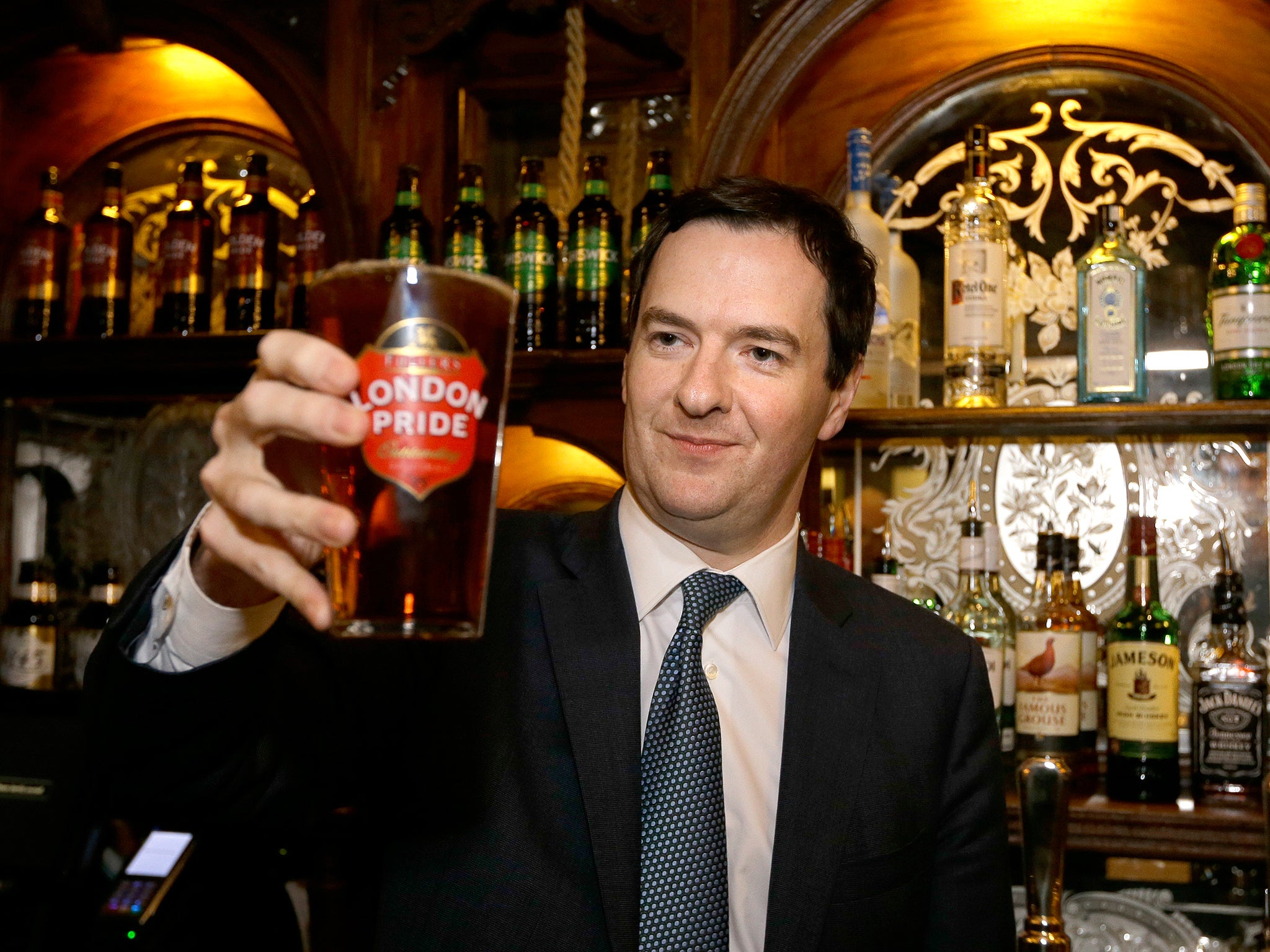George Osborne claims cutting the top rate of tax raised £8bn. It actually cost the country £2.4bn - and here's how
Higher earners put their income on hold for a year to benefit from a tax cut. The Chancellor's apparent success is an accounting trick


Your support helps us to tell the story
From reproductive rights to climate change to Big Tech, The Independent is on the ground when the story is developing. Whether it's investigating the financials of Elon Musk's pro-Trump PAC or producing our latest documentary, 'The A Word', which shines a light on the American women fighting for reproductive rights, we know how important it is to parse out the facts from the messaging.
At such a critical moment in US history, we need reporters on the ground. Your donation allows us to keep sending journalists to speak to both sides of the story.
The Independent is trusted by Americans across the entire political spectrum. And unlike many other quality news outlets, we choose not to lock Americans out of our reporting and analysis with paywalls. We believe quality journalism should be available to everyone, paid for by those who can afford it.
Your support makes all the difference.Speaking in Parliament today, George Osborne said this: “Under this government the richest pay a higher proportion of income tax… There was an £8bn increase in revenues from additional rate taxpayers [in 2013/14], which completely defies the predictions made by the Labour party at the time, and shows that what we have are lower, competitive taxes that are paid by all.”
I don’t have access the exact figures to which Osborne refers, but his statement is broadly in line with forecasts in May 2015, which showed a projected increase in income tax paid by additional rate taxpayers of £7.1bn.
Does this increase vindicate, as Osborne suggests, the decision to cut the 50p rate? Reader, it does not – and here’s why.
To understand the effects of cutting the top rate of tax, you need to understand what total receipts would have been if Osborne hadn’t cut the rate with effect from 2013/14 and then compare them to the actual receipts for that year. No one has done that exercise since the cut, but HMRC did try out some projections beforehand. It calculated that cutting the 50p rate to 45p in the pound would cost money, some £360m over five years.
So how do we explain the £7bn increase in receipts?
As Osborne well knows, if you tell people in March 2012 that you’re going to cut their tax bill by a tenth (from 50 per cent to 45 per cent) in a year’s time, people will choose to delay their payments until April 2013 when their bills will be lower. And so they did.
We knew this would happen. Francesca Lagerberg, head of tax at Grant Thornton, had stated that the decision was “likely to drive behaviour for the next 12 months as those with the wherewithal to defer dividends and bonuses will do so until the tax rates fall.”
Then, in May of last year, HMRC confirmed that it had happened. Records of the top 1 per cent share of income were, they confirmed, artificially low in 2012-13 - because people delayed receiving income until rates fell - and artificially high in 2013-14, when those delayed receipts were finally received. Combine those two years, and you will explain your £7bn jump in tax take.
It’s worth also noting the change in the composition of receipts from additional rate payers in 2012/13 to 2013/14. There was little point delaying basic rate income, because the percentage of tax taken remains static – and, in fact, basic rate income actually fell from £1.78bn to £1.73bn. There was also little point in delaying higher rate income, for the same reason; receipts there rose by a modest 7 per cent, from £11.2bn to £12bn. But on additional rate income – where the tax bill falls by a tenth – there is a 19 per cent increase in receipts to HMRC.
Before the change, HMRC forecast that £6.25bn of income would be moved from 2012/13 to 2013/14. A £6.25bn reduction, followed by a £6.25bn increase would give you a difference in expected tax receipts of 45 per cent - or £5.625bn in tax. That calculation makes the sensible assumption that only income benefiting from the cut – taxable at 45 per cent in the latter year, rather than 50 per cent in the former – is pushed forward).
It’s only that Osborne has been a little economical with the truth. It’s not only that, on all the available evidence, his tax cut actually cost money. It’s that the whole episode signals a terrible indictment of Government policy.
Osborne could have taken measures to prevent these delaying tactics – which, remember, only benefited those earning over £150,000 per annum – but he didn’t. And this has cost the country £2.4bn in tax.
Jolyon Maugham is a QC specialising in tax. He is a member of the Equality and Diversity and the Rentention Sub-committee of the Bar Council. He blogs at waitingfortax.com. Follow him on Twitter: @JolyonMaugham
Join our commenting forum
Join thought-provoking conversations, follow other Independent readers and see their replies
Comments